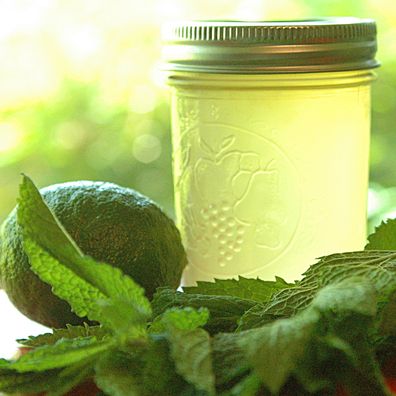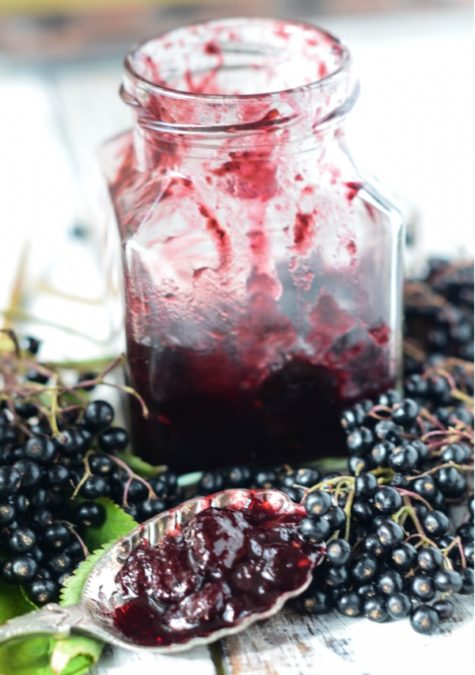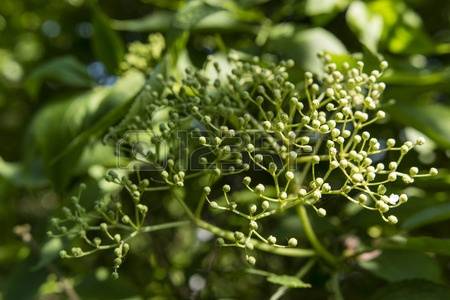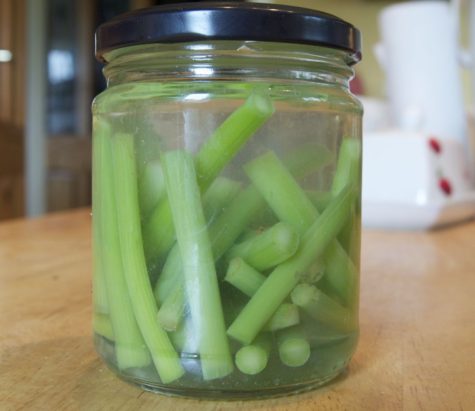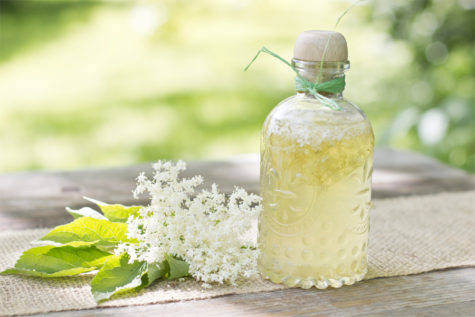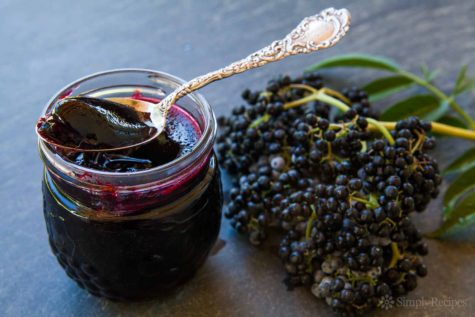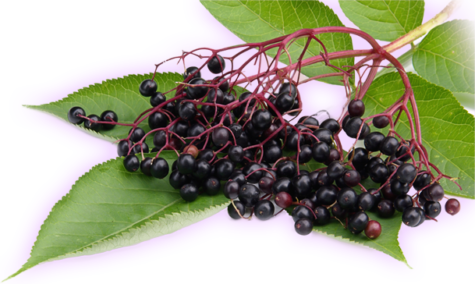Condiments
Fresh Peppermint Jam
Fresh Peppermint Jam:
- 250 g of peppermint leaves
- 1 kg of sugar
- 2 lemons
- 0.5 liters of water
Wash mint leaves with stems, dry slightly and chop. Cut lemons into small pieces with the skin. Put everything into the pot and boil for 10 minutes. Leave for a day. Filter the infusion, add the sugar and cook until tender. Pour hot boiled jam into jars and close tight.
From: Herbal Picnic
Elderberry Chutney
Here we have 2 very old recipes for Chutney made with Elderberries:
- 2 lb. Elderberries,
- 1 large Onion,
- 1 pint Vinegar,
- 1 teaspoonful Salt,
- 1 teaspoonful ground Ginger,
- 2 tablespoonful Sugar,
- 1 salt spoonful Cayenne and mixed spices,
- 1 teaspoonful Mustard seed.
Stalk, weigh and wash the berries; put them into a pan and bruise with a wooden spoon; chop the onion and add with the rest of the ingredients and vinegar. Bring to the boil and simmer till it becomes thick. Stir well, being careful not to let it burn as it thickens. Put into jars and cover.
Second Recipe:
- 1 1/2 lb. of Elderberries
- 1 Onion
- 6 Cloves
- 1/4 oz. ground Ginger
- 2 oz. Demerara Sugar
- 3 oz. Raisins
- a dust of Cayenne and Mace
- 1 teaspoonful Salt
- 1 pint Vinegar.
Rub the berries through a wire sieve. Then pound the onion with the spices, raisins and salt. Add the vinegar and put all in an enameled saucepan and boil with the pulp of the berries for 10 minutes. Take the pan from the fire and let it stand till cold. Put the chutney into jars and cork securely.
From: A Modern Herbal
Note: Most species of Elderberry are edible when picked ripe and then cooked. Both the skin and pulp can be eaten. However, it is important to note that most uncooked berries and other parts of plants from this genus are poisonous. European Elderberry (Sambucus nigra) is the variety that is most often used for health benefits as it is the only variety considered to be non-toxic even when not cooked.
Pickled Elder Blooms and Shoots
One seldom has the chance of now tasting the old country pickle made from the tender young shoots and flowers of the European Elder. John Evelyn, writing in 1664, recommends Elder flowers infused in vinegar as an ingredient of a salad. The pickled blossoms are said by those who have tried them to be a welcome relish with boiled mutton, as a substitute for capers.
Clusters of the flowers are gathered in their unripened green state, put into a stone jar and covered with boiling vinegar. Spices are unnecessary. The jar is tied down directly the pickle is cold. This pickle is very good and has the advantage of costing next to nothing.
The pickle made from the tender young shoots – sometimes known as ‘English Bamboo’ – is more elaborate. During May, in the middle of the Elder bushes in the hedges, large young green shoots may be observed. Cut these, selecting the greenest, peel off every vestige of the outer skin and lay them in salt and water overnight.
Each individual length must be carefully chosen, for while they must not be too immature, if the shoots are at all woody, they will not be worth eating, The following morning, prepare the pickle for the Mock Bamboo.
To a quart of vinegar, add an ounce of white pepper, an ounce of ginger, half a saltspoonful of mace and boil all well together. Remove the Elder shoots from the salt and water, dry in a cloth and slice up into suitable pieces, laying them in a stone jar. Pour the boiling mixture over them and either place them in an oven for 2 hours, or in a pan of boiling water on the stove. When cold, the pickle should be green in colour. If not, strain the liquor, boil it up again, pour over the shoots and repeat the process.
The great art of obtaining and retaining the essence of the plant lies in excluding air from the tied-down jar as much as possible.
Elderflower Vinegar
Here is a very old recipe for Elderflower Vinegar:
Take 2 lb. of dried flowers of the European Elder. If you use your own flowers, pluck carefully their stalks from them and dry them carefully and thoroughly. This done, place in a large vessel and pour over them 2 pints of good vinegar. Close the vessel hermetically, keep it in a very warm place and shake them from time to time. After 8 days, strain the vinegar through a paper filter. Keep in well-stoppered bottles.
This is an old-world simple, but rarely met with nowadays, but worth the slight trouble of making. It was well-known and appreciated in former days and often mentioned in old books; Steele, in The Tatler, says: ‘They had dissented about the preference of Elder to Wine vinegar.’
From: A Modern Herbal
Elderberry Jams and Jelly
Most species of Elderbery are edible when picked ripe and then cooked. Both the skin and pulp can be eaten. However, it is important to note that most uncooked berries and other parts of plants from this genus are poisonous. Sambucus nigra the European Elderberry is the variety that is most often used for health benefits as it is the only variety considered to be non-toxic even when not cooked.
The Fruit Preserving Section of the Food Ministry issued during the War the following recipe for Elderberry and Apple Jam:
- 6 lb. Elderberries,
- 6 lb. sliced apples,
- 12 lb. sugar.
Make a pulp of the apples by boiling in water till soft and passing through a coarse sieve to remove any seeds or cores. The Elderberries should also be stewed for half an hour to soften them. Combine the Apple pulp, berries and sugar and return to the fire to boil till thick.
Another Recipe:
Equal quantities of Elderberries and Apples, 3/4 lb. sugar and one lemon to each pound of fruit. Strip the berries from the stalks, peel, core and cut up the apples and weigh both fruits. Put the Elderberries into a pan over low heat and bruise them with a wooden spoon. When the juice begins to flow, add the Apples and one-third of the sugar and bring slowly to the boil. When quite soft, rub all through a hair sieve. Return the pulp to the pan, add the rest of the sugar, the grated lemon rind and juice and boil for half an hour, or until the jam sets when tested. Remove all scum, put into pots and cover.
Elderberry Jam without Apples:
To every pound of berries add 1/4 pint of water, the juice of 2 lemons and 1 lb. of sugar. Boil from 30 to 45 minutes, until it sets when tested. Put into jars and tie down when cold.
Elderberry Jelly:
The Elderberry will, of course, also make a jelly. As it is a juicy fruit, it will not need the addition of any more liquid than, perhaps, a squeeze of lemon. Equal quantities of Elderberry juice and apple juice, and apple juice from peeling, will require 3/4 lb. of sugar to a pint. Elderberry Jelly is firm and flavorous, with a racy tang.
Source: A Modern Herbal
Elderberry Ketchup
Here is a very old recipe for Elderberry Ketchup. When making this recipe, be sure that you are using the berries from the European Elder, Sambucus nigra, as berries from other varieties may cause nausea and vomiting.
Elderberry Ketchup
- 1 pint Elderberries,
- 1 oz Shallots
- 1 blade Mace
- 1/2 oz Peppercorns
- 1 1/2 oz whole Ginger
- 1 pint Vinegar
Pick the berries (which must be ripe) from the stalks, weigh and wash them. Put them into an unglazed crock or jar, pour over the boiling vinegar and leave all night in a cool oven. Next day, strain the liquor from the berries through a cloth tied on to the legs of an inverted chair and put it into a pan, with the peeled and minced shallots, the ginger peeled and cut up small, the mace and peppercorns. Boil for 10 minutes, then put into bottles, dividing the spices among the bottles. Cork well.
From: A Modern Herbal
